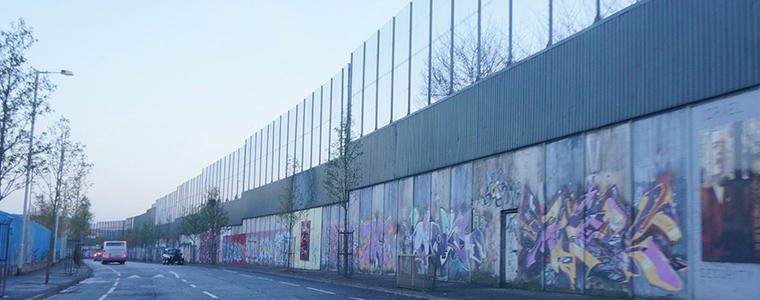It is said you should never forget where you came from, and I often think that is why I ended up working here at the U.S. Institute of Peace.

I grew up in Ireland, very close to the border with Northern Ireland, during the time known as the “Troubles.” Over a 30-year period that began in the 1960s, more than 3,500 people were killed on both sides of the conflict, as armed groups on the nationalist side fought for political unity with the rest of Ireland, and armed groups on the unionist side fought for Northern Ireland to remain part of the United Kingdom. Even before this, there had been a long history of animosity between Catholics and Protestants in Northern Ireland after centuries of British rule.
During the “Troubles,” communities were torn apart by violence and I remember those stories on the news every day. Growing up in the border area, I remember the heavy fortifications at border crossings, the tension in the air, the divisions so entrenched it seemed they could never be bridged.
And I remember the day the Good Friday Agreement was signed in 1998, a peace agreement that had been years in the making and had taken enormous efforts from so many committed individuals and groups. The U.S. and its envoy, former Senator George Mitchell, played a pivotal role in brokering the landmark agreement. Mitchell describes the effort in a video that forms part of the “Witnesses to Peacebuilding” series in USIP’s Global Peacebuilding Center. It is still widely considered a success story, and held up as a powerful example of the possibility of peacebuilding in the face of a seemingly intractable conflict.
Yet the reality in Northern Ireland is more complicated. Recent news stories highlight the unfinished business of reconciliation in a place where high walls still divide communities in Belfast, and families still seek justice for violent acts committed during the Troubles by perpetrators who have never been charged.
In this context, questions are being raised about what peace really means if justice remains elusive. It is a challenge that has been faced in so many post-conflict situations in which USIP works, and it is a reminder that the hard work of peacebuilding does not end with the signing of formal agreements.
Research cited by the World Bank shows that it can take up to 30 years for countries to establish fully functioning institutions that can help prevent a recurrence of violence. This process of rebuilding necessarily includes the reconstruction of infrastructure and the development of new political systems. But at its core, peacebuilding is about people. It requires healing relationships and finding the common ground on which a new society can stand.
My work at the U.S. Institute of Peace focuses on educating young people about the possibility of peace, and I am constantly motivated from my own experience. It took years of hard work to achieve the Good Friday Agreement in Northern Ireland, and that was a milestone that many thought would never be achieved; that gives me hope.
But the work is not done there, or in Bosnia-Herzegovina, or Rwanda, or in South Africa, or in so many other post-conflict or otherwise transitional countries and regions. It will take continued efforts by committed peacebuilders of all kinds to address unresolved issues from the past that threaten to unravel the future in some of these still-vulnerable places.
Ann-Louise Colgan is director of USIP’s Global Peacebuilding Center.



